Cookie
This website requires cookies to provide all of its features. For more information on what data is contained in the cookies, please see our Privacy Policy page. To accept cookies from this site, please click the Accept button below.

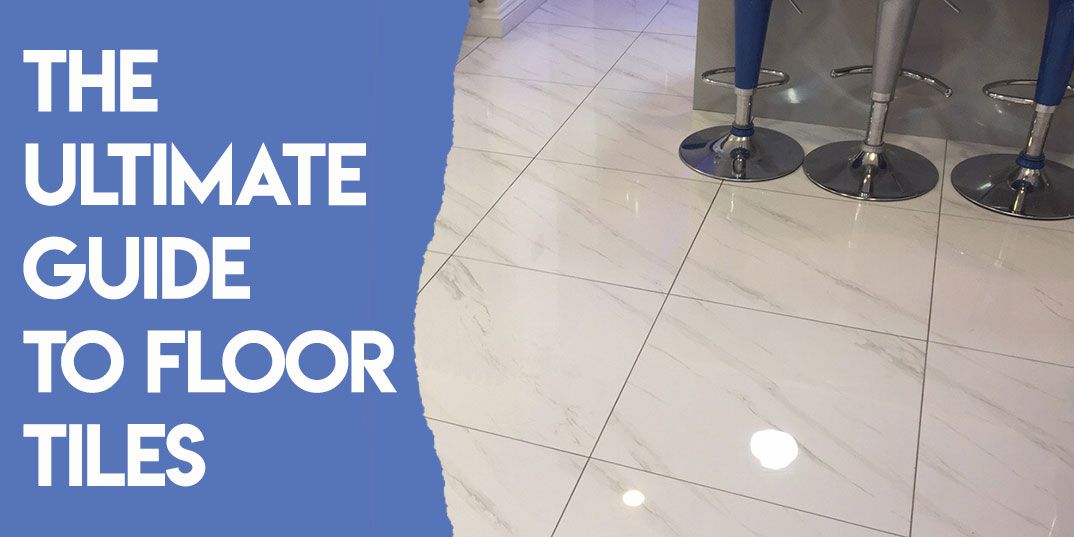
When it comes to your home, flooring is just as important as your walls. I mean, it’s basically half of the room, so you need to make sure you put a lot of thought into it when going for a redesign. And so with that in mind, that’s what we’re going to look at today in an extra special article on The Ultimate Guide To Floor Tiles.
In a similar sense to your walls, the floors of your room are going to be the subtle backdrop for the rest of your interior decoration plan. But it sure isn’t just the aesthetics of your house/room that your flooring has an impact on, flooring will also have a practical impact on how well your room performs in the grand scheme of things, as well as the impression it leaves with guests, friends and family too.
The flooring you end up going for should really work out with the rest of the room, otherwise it’s going to look out of place and just generally bad. If this is a new home you’re working with then you will have a lot more freedom to play around with the whole interior design and the overall look of the house. On the other side, if you’re in a period property or an outside source owned home, then your freedom is significantly less in play. If this is the case, then the style of your walls and floors are likely already dictated by the current style of the property and trying to match what is already there.
This is all well and good but we haven’t even started on the most important aspect of the whole process; budget. The very first stage you need to be prepared for is your budget. So unless you're the CEO of Amazon and money isn’t a worry, budget is going to be something that will probably gnaw at the back of your mind throughout the project.
Over the course of this article, we’re going to look at three key things to consider when redesigning your home, with a few fun facts popped in along the way.
Room flooring
Floor fitting
Cost
And on that note, let’s get straight into our Ultimate Guide To Floor Tiles!


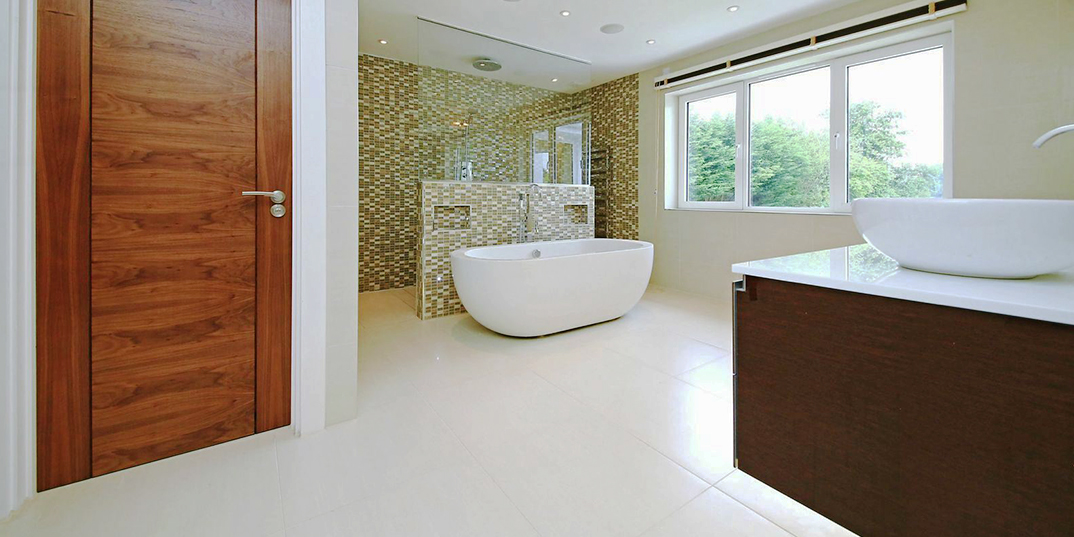

This first section is going to be the longest section of this article as we’re going to be looking at all the different types of floorings for all kinds of rooms that you might have in your home. As you can see from the subheading of this part, we’re going to start by looking at the bathroom.
There is no other room like your bathroom in the house. If you perhaps have a sauna or steam room, you are the exception but for most of us, the bathroom is a unique section of your home.
Bathroom flooring needs to be able to deal with high levels of moisture and rapid changes in temperatures. On top of this, the flooring is going to have to be resistant to stains and non-slip, which as we all know is the last thing you want when getting out of a relaxing bath after a hard day of work.
Whereas this is something that’s very important to keep in mind, the fact is most people want something in their bathroom that doesn't just do the above - as well as look good - but it has to be easy to clean.
So what tiles are best for you and your bathroom?
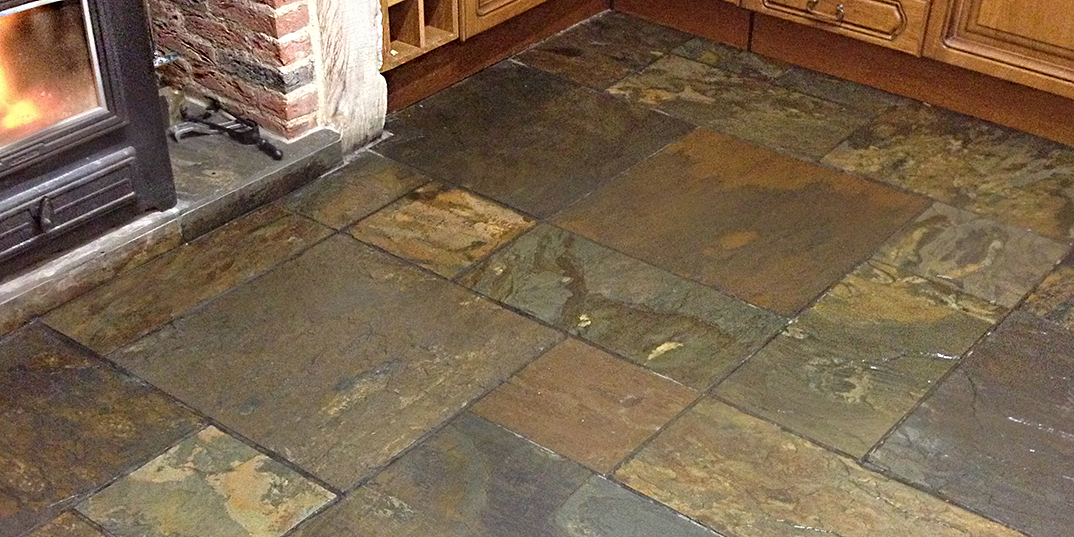

To start with, let’s take a look at one of the more luxurious options for you and your bathroom. Natural stone is a great way to show your bathroom off, so when visitors come over, their sure to say something along the lines of ‘wow’. Natural stone has less porous varieties such as marble or slate too.
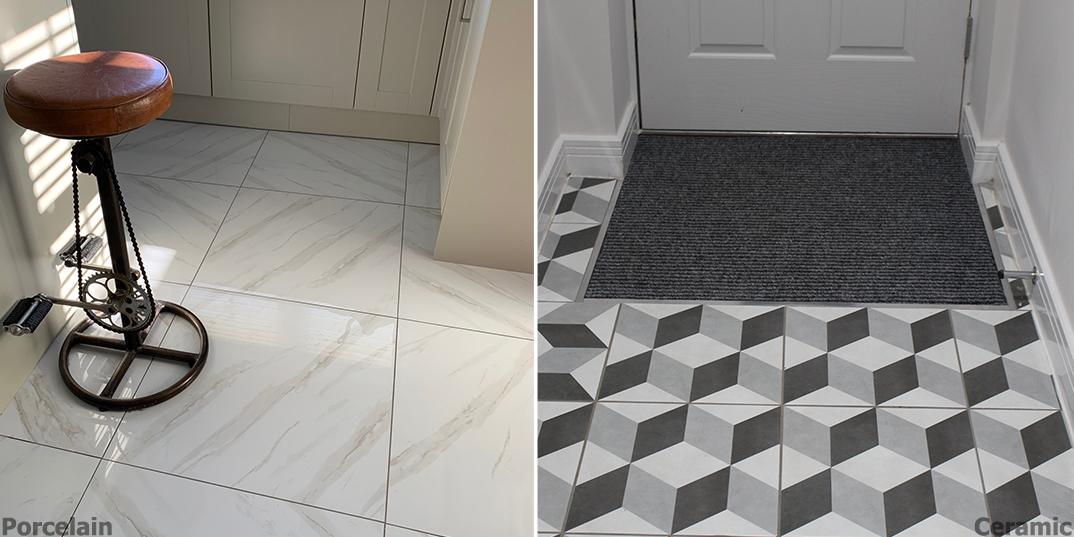

Perhaps the most common option for bathroom tiles is porcelain and ceramic but there is definitely a reason for it. Porcelain and ceramic go under the same category in most cases with the former being more expensive as it is made with a much denser clay and is fired for a longer period of time at an even higher temperature, so you know what your getting is good. That being said, we’re not shunning ceramic as they have good qualities too. These tiles have their pattern(s) and colours as just a surface layer.
One fun fact about ceramic tiles is that the market is expected to grow seven per cent over the next few years (2018-24).
Perhaps one of the most out of the box options you can opt for, rubber is an ideal choice if you want a more family-friendly bathroom. Whereas it isn’t a timeless look, it is very comfortable on your feet and is available in that ever precious non-slip finish.
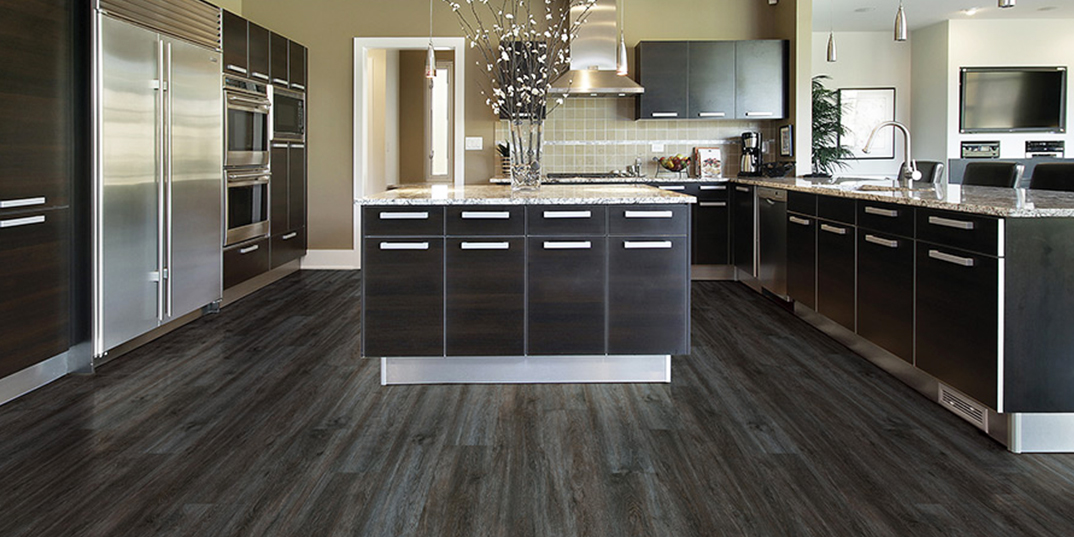

One of the most popular options out there is Luxury vinyl tiles (LVT). This is available in a huge range of colours and patterns as well as finishes that look just like materials mentioned above such as stone. Comfy on your feet, vinyl tiles are a great option to consider.
Woah woah woah, I know what you’re thinking, but calm down we don’t mean just normal wood that would be ruined within a day of use. What we mean is Engineered Timber so you won’t have to have a constant worrier in the house about the floor getting wet or being warped in a humid environment. For family bathrooms, this isn’t the most practical of choices so it isn’t perfect and despite what we said above, if water does get on the floor, you would be better mopping it up as soon as you can.


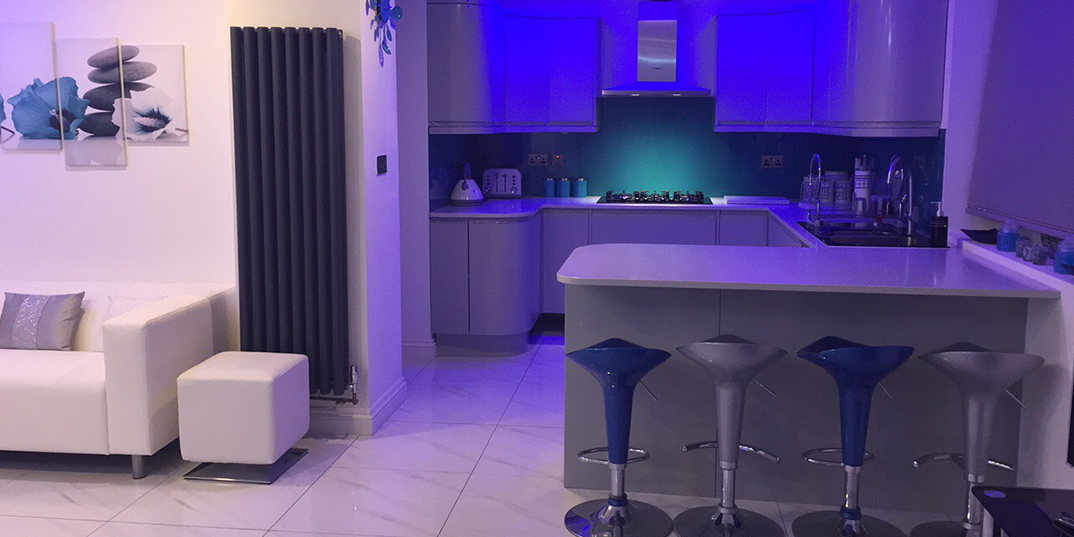

Next, we’re going to be looking into what we like to view as the opposite of the bathroom and take a gander into the kitchen - something that can be seen as the most important room for a home.
It’s always a pain to decide on a look for a new kitchen. In a house where there is more than one of you, you need to take the other person’s views and tastes into consideration before you go ahead with the reconstruction of what we tend to call, the hub of your home.
For open-plan kitchens, there are two kinds of flooring you can opt for. And what we mean by this is that you can have two different flooring styles in different areas of the room. It can separate the room from a place of cooking to a place of eating. This, in turn, separates the room for social occasions too, but not in a bad way.
This is great for both small and big kitchens, especially when the lounge area is connected to the main kitchen. So different flooring can have a big impact.
But what tiles are best for you and your kitchen?
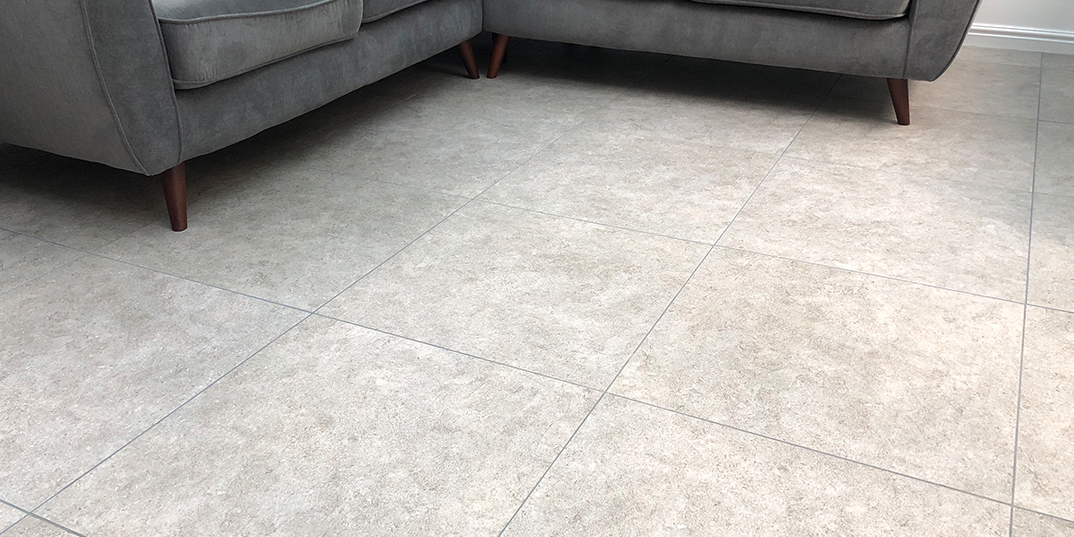

To start us off, let’s have a look at concrete. Specifically, we’re going to look at polished concrete which is a very popular choice for your kitchen and there’s definitely a reason. This is a great option for people who want underfloor heating as it has great thermal properties. On top of this, the choices you’re going to be looking at for colours and finishes are very much wide range.
Going back to stone, natural flooring like this has got to be up there when you’re thinking of a change in your home. Natural stone gives you that rustic and classic kitchen style but only if you pick the right finishes. If you go for smooth tiles, these will work best with contemporary kitchens. Natural stone is an option that is going to last you for years. Trust us. The best quality natural stone tile will last even longer, just like the kind of tiles we provide at TilesPorcelain.
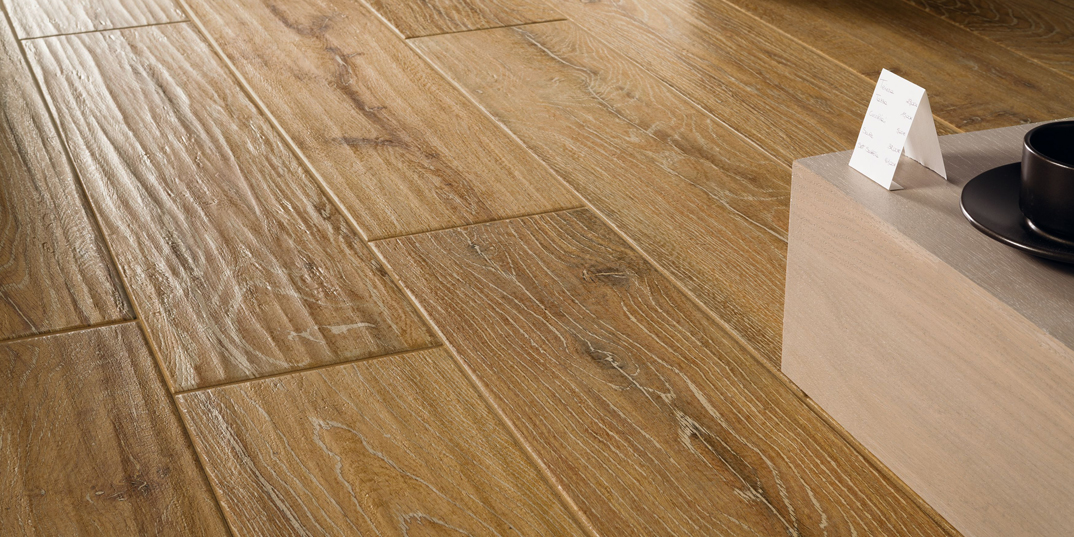

Wood isn’t just an option for the bathroom but timber flooring is a great option for you going into a redesign. That being said, you should keep in mind that wood flooring is much higher maintenance than stone tiles. For engineered flooring like wood, you’re going to be getting a much safer option, especially when it comes to movement. That doesn’t mean scratches and stains are avoidable though.
There’s only so much to say about vinyl so we’ll keep it simple. This is a tile that’s easy to clean, resistant to water but isn’t going to last as long as the other options on this list. With a wide range of colours and finishes, vinyl is an option to look at. Under this same category, we have Linoleum and cork which are both similar but are significantly more eco-friendly.
The international market for vinyl flooring was at more than $20 million in 2016 but by 2023, it is estimated that the market will be valued at over $48 million. If this came to reality, then it would mean that the market has experienced thirteen per cent from 2017 to 2023.


There’s only so much to say about vinyl so we’ll keep it simple. This is a tile that’s easy to clean, resistant to water but isn’t going to last as long as the other options on this list. With a wide range of colours and finishes, vinyl is an option to look at. Under this same category, we have Linoleum and cork which are both similar but are significantly more eco-friendly.
The international market for vinyl flooring was at more than $20 million in 2016 but by 2023, it is estimated that the market will be valued at over $48 million. If this came to reality, then it would mean that the market has experienced thirteen per cent from 2017 to 2023.


Short but sweet, let’s talk about the first option for your living room carpet. Perhaps the most obvious choice, carpet is the softer option that will satisfy anyone in your home, whether its guests, children or even pets, this is an option to look into.
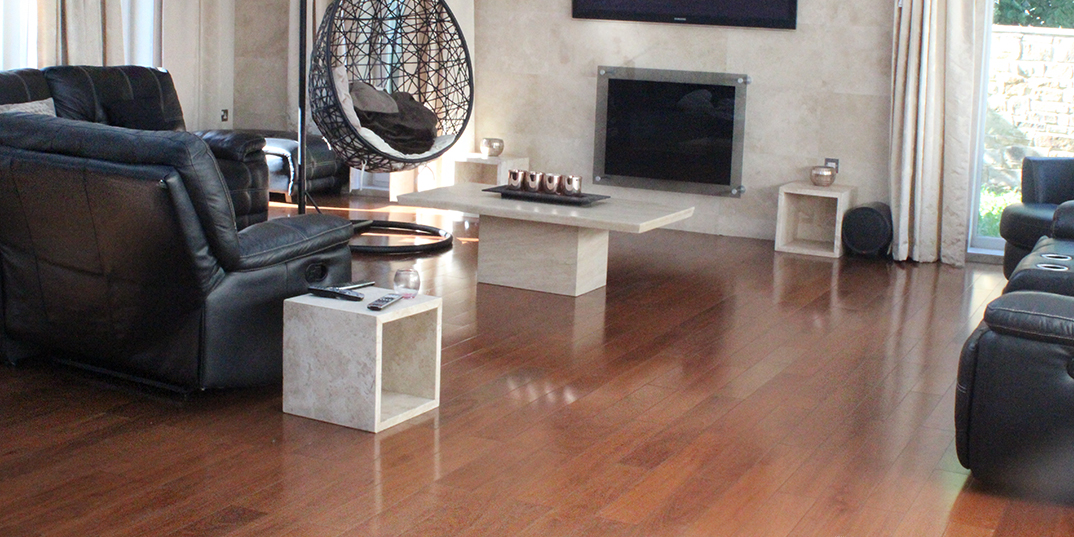

Short but sweet, let’s talk about the first option for your living room carpet. Perhaps the most obvious choice, carpet is the softer option that will satisfy anyone in your home, whether its guests, children or even pets, this is an option to look into.


Maybe the Au Naturel option is better for you? If you like the idea of soft flooring but have the constant thought that carpet might not be a good practical choice, then go for a compromise and pick natural flooring. The majority of the options you’d pick in this category are all fine with the environment so you needn’t feel bad on that front either! This isn’t a complete replacement for carpet, but it’s the next best thing for sure. On top of this, the aesthetics that is brought about from natural flooring is brilliant and something that will appeal to all.
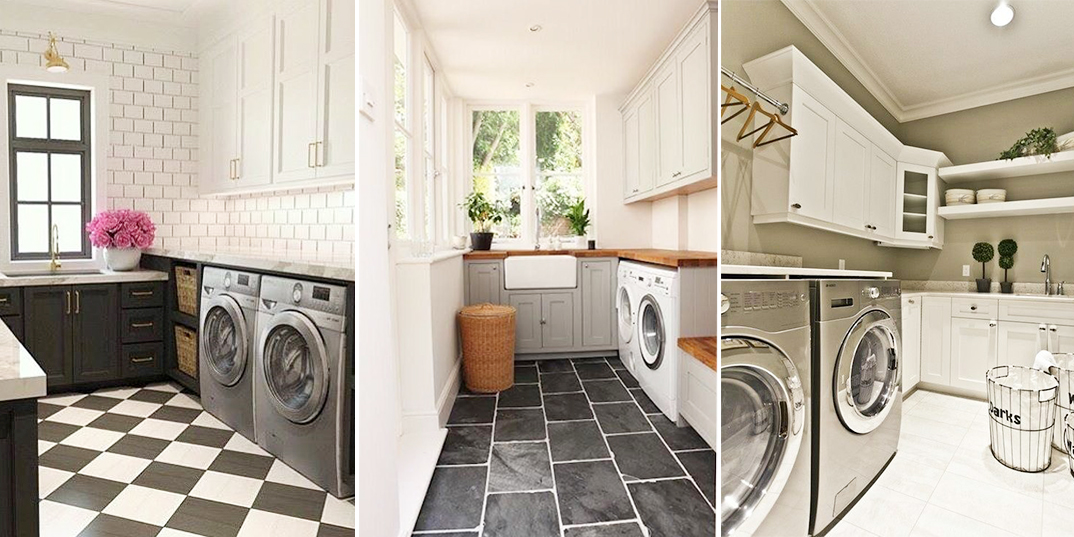

These next few rooms, we’re going to keep short and sweet and the simple reason behind that is because they aren’t as important as the former!
When talking about your utility room, practicality is better than being aesthetically pleasing. At the end of the day, who is going to be going in there but you?! The floor needs to be stain-resistant, so if you opt for porcelain or ceramic tiles, the likelihood of stains is reduced.
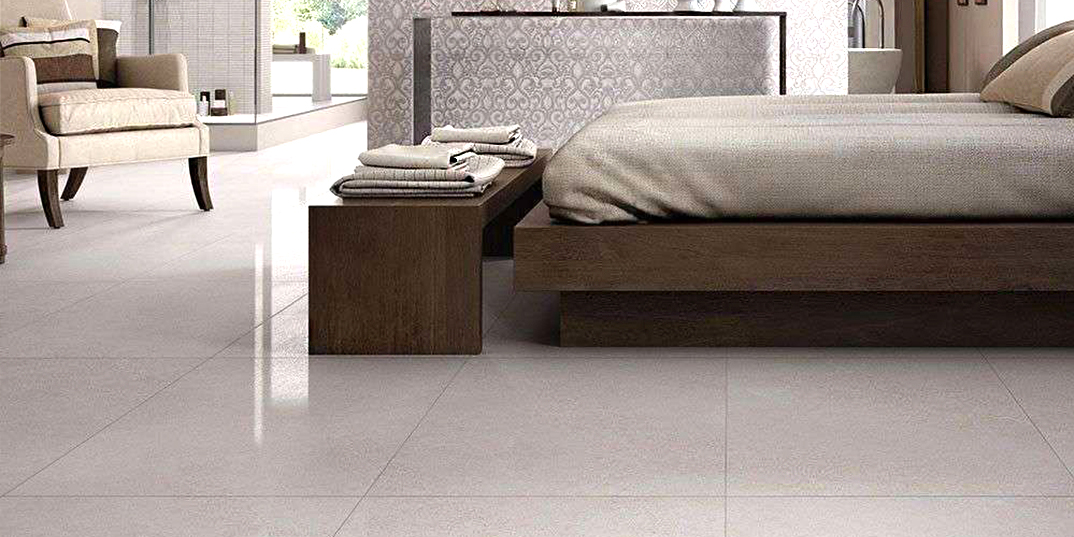

This one isn’t really an easy one to talk about because bedroom flooring is really all down to personal preference. Carpet is easily the favourite choice for bedrooms because it’s so nice on your feet when you first wake up in the morning but it isn’t for everyone.
Some of you will prefer laminate flooring with a rug placed on top and this can look really cool but is it practical? Not necessarily.
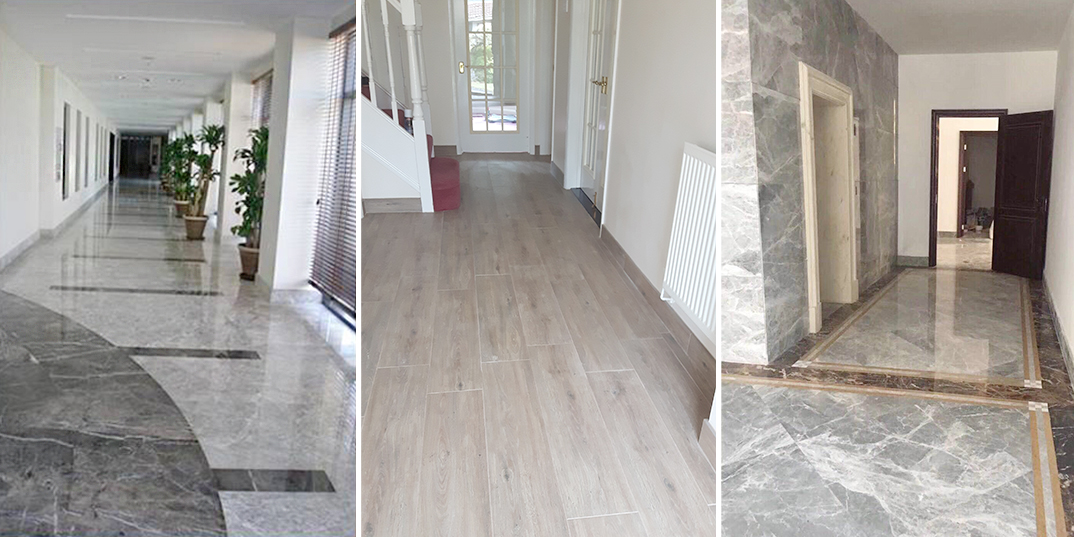

This could be the most important place to floor in your home. We’ve called the kitchen the hub of your home many times at TilesPorcelain but your hall, specifically your entrance hall, is vital to get right aesthetically.
Not only does it need to look great but it needs to be super durable and something you can keep on top of, cleanliness wise.
Natural fibre flooring is a suitable choice for hallways but don’t forget porcelain, ceramic or stone. These are brilliant options for you to choose from too.
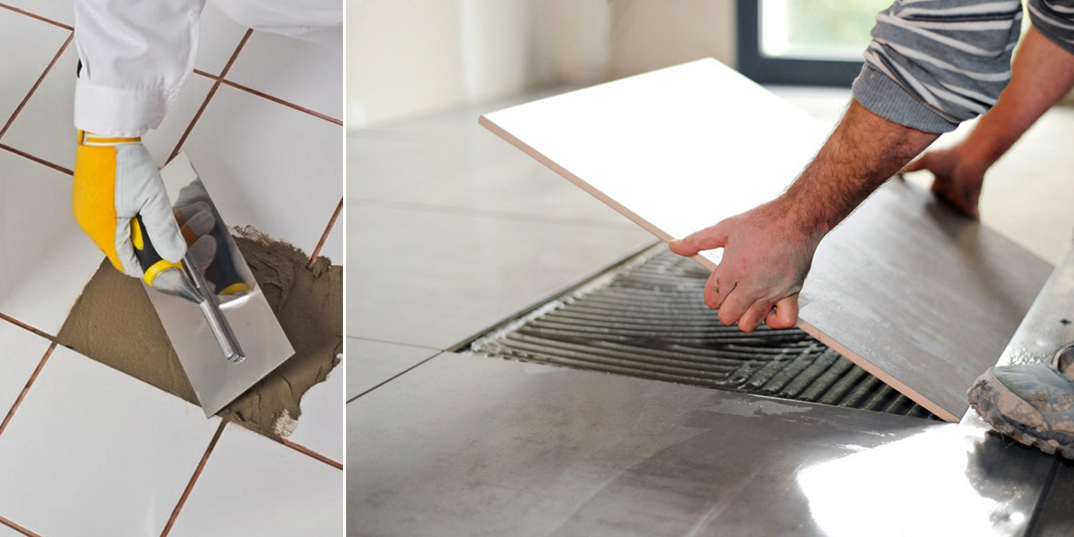

So, you’ve picked your flooring. You’ve had ten arguments with your other half saying that you preferred wood over vinyl but you’re going with vinyl and that’s final. Now you have to fit it.
Perhaps the most crucial step after picking the actual design of whatever room it is that of your decorating but the fitting is where you’ll really see the room come together.
Now I just mentioned wood and vinyl but really it doesn’t matter what material you’ve chosen as the fitting process still needs to be good no matter what. If you aren’t comfortable doing it yourself then call the professionals in to do it for you, something that might be best, especially when it comes to carpet or real stone floors.
But there are also plenty of floor options out there that are actually relatively easy to fit. This includes porcelain and ceramic tiles but that isn’t all as engineered timber flooring isn’t too hard either.
On the other hand, you might have gone for the natural stone option and I can tell now that isn’t an easy job. This is where calling the professionals in, isn’t a bad idea however, don’t expect a cheap fitting of this material. Prices are known to go up and that is where cost comes in.
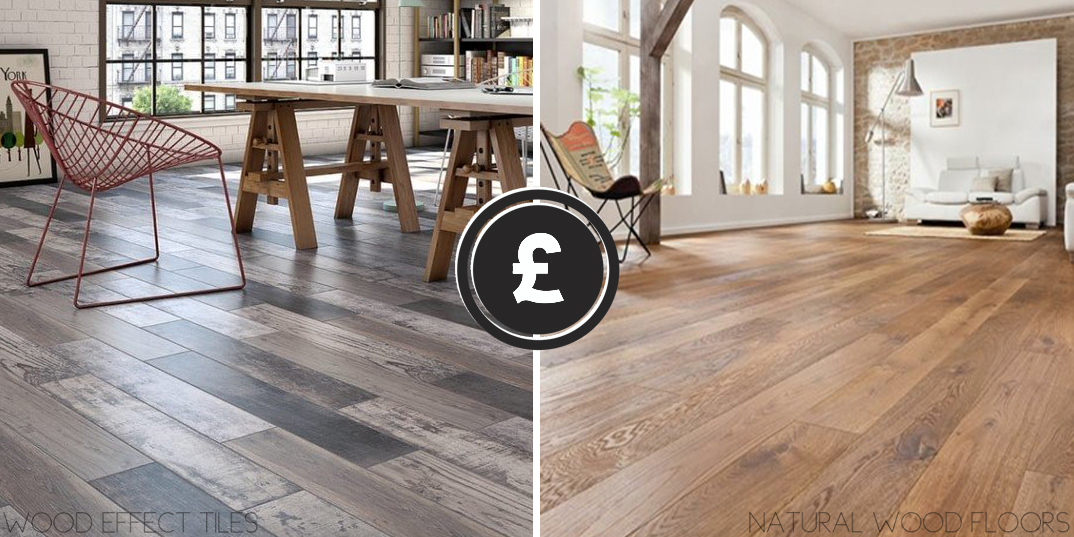

Now perhaps the most important thing you have to consider is cost. What is your budget? How much are you willing to spend? These are the kind of questions you have to ask yourself before anything.
So we’re going to look at the options we have mentioned above but keep in mind that these prices are generic and aren’t necessarily what the final cost will be.
To start with, let’s take a look at porcelain tiles. Given that this is a hard-wearing tile and is up for grabs in plenty of styles, colours and finishes, it is a common option for many people redesigning their homes. On top of this, this is a low maintenance tile that won’t need much aside from a mop every now and then. For porcelain tiles, you’re looking at £40/m².
For ceramic tiles, you’re going to be getting a cheaper option, however. These types of tiles are available in several kinds of styles and colours and are designed to be similar to stone but they are lighter in weight and cheaper. The price of ceramic tiles generally go from £20/m².
The product mix of the flooring world is dominated by these two tiles so you know you’re going with a safe option.
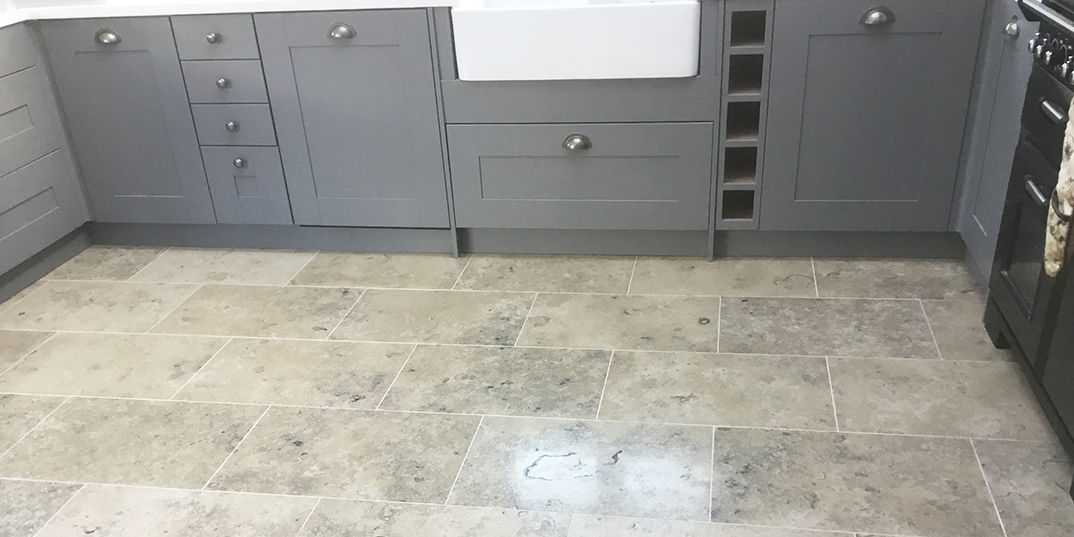

Speaking of stone, this is definitely one of the more popular flooring options and it has been that way for centuries.
Stone flooring is a great choice you can pick but don’t forget that because this is an extremely hard wearing and visually pleasing option, this kind of flooring is not cheap. Available for both traditional and contemporary homes, stone flooring is a flooring that you won’t regret buying though, especially if it is fitted right. The price for stone flooring can be anywhere around £30/m² but good quality flooring can go up to £60/m².
Natural stone makes up for around a fifth of the value share in this market so whereas it’s not the most popular, it’s still a tile that’s going to last.
Next, let’s talk about laminate flooring. This is a type of flooring that has a photographic image of wood or stone which is then proceeded to be on top of a core board made of compressed fibres.
The material covering laminate is what gives it a hard wearing finish and well-known toughness. This is also a choice that’s relatively easy to fit on your own. There is a typical click system installation with a laminate so don’t worry about having to mess about with glue or nails.
In terms of cost, this option can be either really cheap for as little as £6/m², but this is a pretty standard option. If you want more high quality, you’re looking at prices up to £25/m².
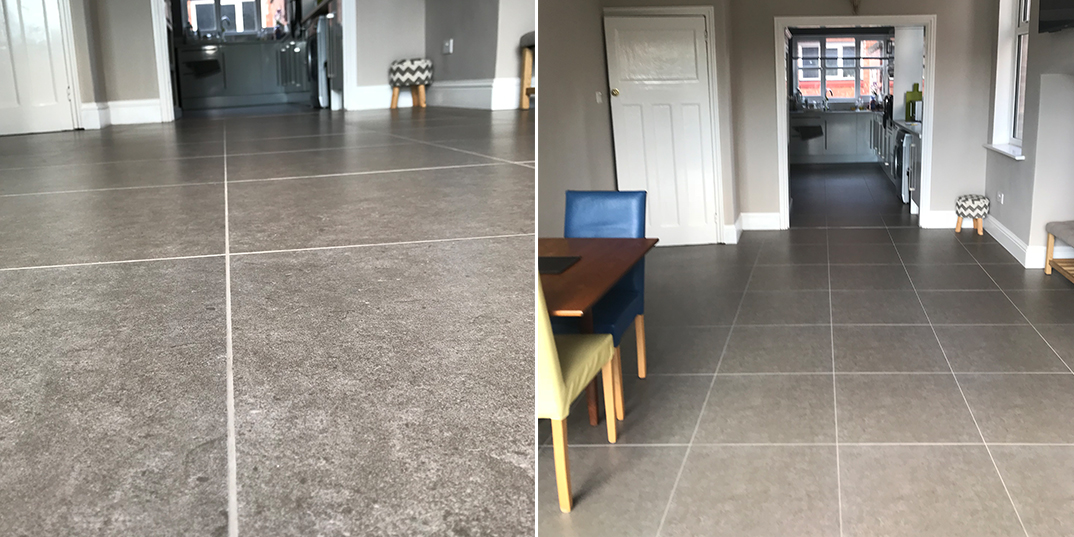

As we mentioned earlier, polished concrete is a great option for your home, specifically for your kitchen. Concrete is a great option for people who want underfloor heating as it has great thermal properties but it’s also very smooth and has a contemporary design which is perfect for some people! You may really vibe with the industry look!
Something we didn’t really touch on earlier is that concrete isn’t really all that friendly to the environment. Despite this, you may be surprised about its positives when it comes to its ‘green’ side. Concrete is usually a flooring that uses recyclable materials in its manufacture and is very tough so don’t worry about damage occurring on its surface. You can go decades without having the need for replacing your kitchen floor with concrete. Did we mention it’s waterproof?
Because of all this and more, concrete isn’t cheap either. This isn’t really a DIY fit either as you’re typically going to need a specialist company to pour in your new floor. The cost of this isn’t cheap as we say. You’re looking at somewhere around the £90/m² mark for concrete.
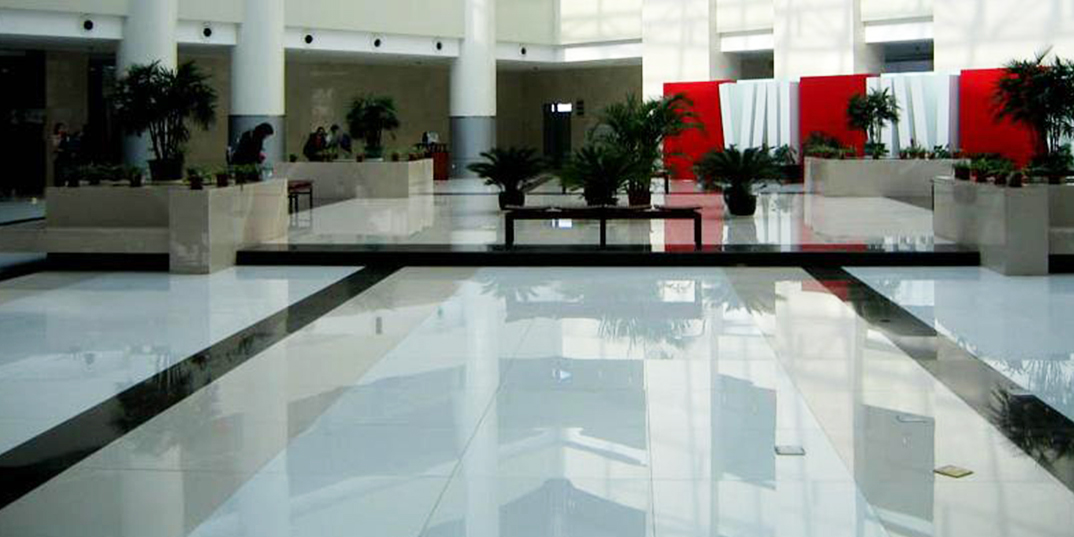

In period homes, wooden flooring is a common thing to see, particularly on the first floor where stone alternatives just weren’t a practical choice when they were initially built. Engineered flooring can also go well with contemporary schemes too.
Such engineered options can provide a much more water-resistant choice for your kitchen or bathroom. For engineered flooring, you’re going to be looking at a price range up to £40/m² in most cases.
As we say, rubber is an out of the box choice for your kitchen or bathroom but that doesn’t make it a bad one! This material comes from rubber trees, and is an option worth looking into as it is a renewable resource with a potential to live up to two decades! On top of this, it can look great in contemporary homes.
Not only does it live for a long time but also insulates, absorbs noise and is resistant massively so you won’t need to worry about any spillages you or your family make on accident! For rubber flooring, you’re looking at a price of around £30/m² but that doesn’t mean it can’t be more expensive as prices are known to shoot up to £60/m².
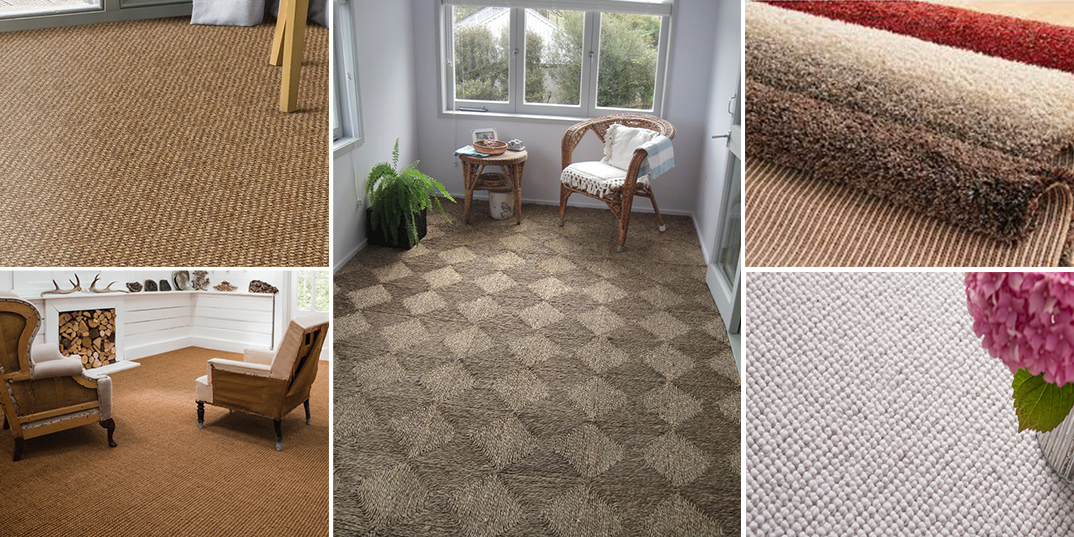

The question you’re probably asking yourself right now is what’s the difference between natural carpets and regular carpets? Well, whereas your typical carpets are made from synthetic fibres and wool, seagrass, sisal and coir are all able to make a sustainable hardware floor coverings.
Traditional carpets are comfortable and very subtle on your feet. It’s this reason as to why it’s so popular in many households. Almost every room in your home can have a slice of carpet fitted in (not literally of course), the only rooms you want to try and avoid putting in carpet is the bathroom and depending on your tastes, the kitchen. One of the key things you want to keep in mind when you opt for carpet is how much foot traffic your new flooring choice is going to get. For carpet, you’re going to be looking at prices up to £30/m² but natural carpets can be more along the lines of £40/m².
As they were once seen as a cheap alternative, Linoleum and Vinyl are far more than just that. Not only are they durable and hard-wearing, but they offer bright flooring that can be used in many rooms in the house. Typically in the kitchen or bathroom, these two options are water-resistant and you don’t have to break your back trying to clean them! On top of all of this, they are very effective when it comes to cost.
Even though they are typically paired together, don’t let that fool you as they both bring their own unique aspect to the table (or should I say your floor). Linoleum is a material of natural products designed from linseed oil mixed together with materials from plants like cork where vinyl is less natural as it is made from synthetic petroleum-based materials. When it comes to price for these two choices, you’re going to be looking at costs of up to £20/m².
Along similar lines of the previous flooring option is Luxury Vinyl. In a nutshell, this is the high-quality version of traditional vinyl. It comes in both planks and tiles rather than a single roll like the former. You can opt for a wood effect on Luxury Vinyl which is very convincing for friends and family visiting your home. On top of all this, Luxury Vinyl is warm on your feet. In terms of price, you’re going to be looking at a cost of up to £40/m².
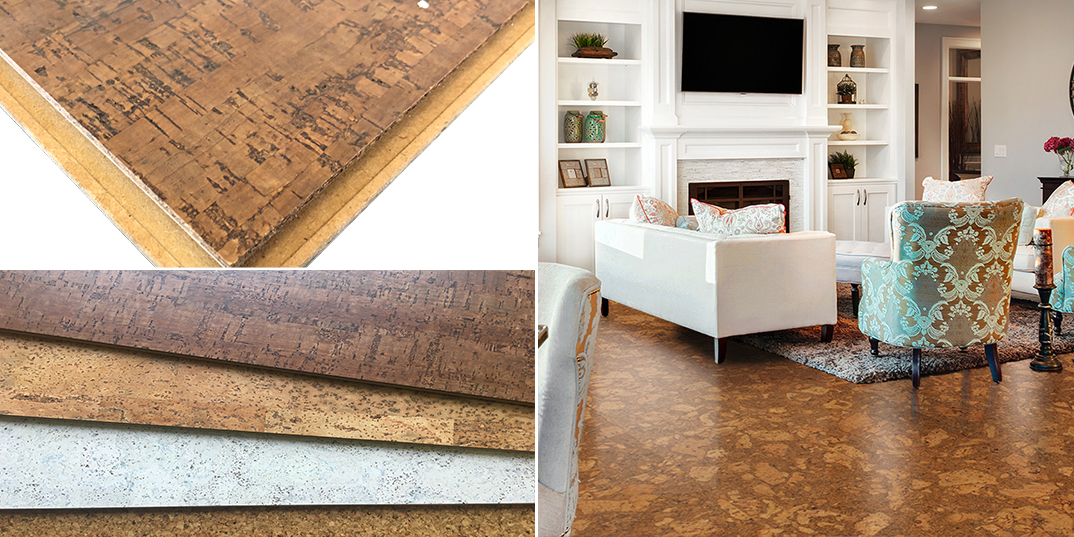

Cork is always an option available to you and your home too. Typically, cork can be quite pricey as it can go up to £90/m² but if this is the tiling for you, you’re in luck! Here at TilesPorcelain, we have a special deal on cork tiles priced up to just £37/m².
This sustainable resource is very scratch resistant so you don’t need to worry about any markings accidentally happening in your kitchen or bathroom.
Now that we’ve got the key things to consider we’re nearly done! But before we finish up, let’s talk about period homes. We’ve mentioned them a few times in this article but what do you do when you need to repair floors in your period home?
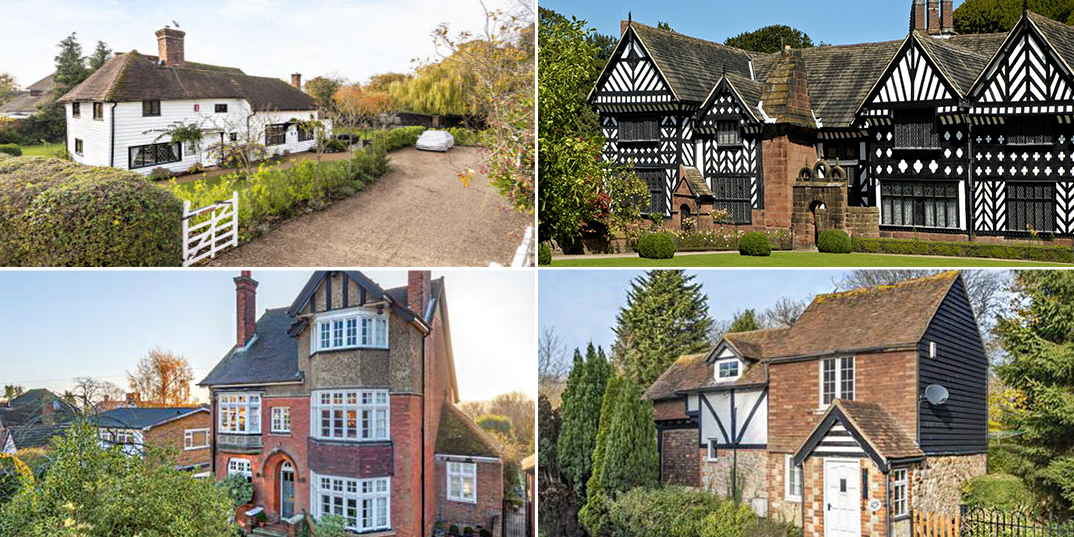

One thing that’s worth noting with period homes is that they can be restored. In fact, in some cases, it might be best to restore the original flooring to get that look of authenticity but this isn’t for everyone as a fresh look might be what you’re looking for.
For that old school timber flooring repairs, you can either tackle it yourself or call in a specialist and don’t worry, this isn’t unheard of. When it comes to stone floors, you need to have a look at what’s underneath it - so what the flooring is laid on - before any work is performed on them. The reason for this is because a lot of old-timey stone flooring was laid straight onto ‘well-rammed earth’.
All this being said, a lot of people and experts in the field will more than likely recommend that you leave the floor alone if you want to actually keep it. There’s plenty of reasons for this including the under moisture, and that the underneath dirt is dried out.
Well, we’ve finally reached the end of our Ultimate Guide to Floor Tiles! We hope you enjoyed it as much as we did writing it. Hopefully, you’ve made up your mind on what kind of flooring you want for your kitchen, bathroom, living room etc. but let’s be serious, you’re probably going to be mulling it over for a few weeks more…
Is porcelain for you? Ceramics? Vinyl? Luxury vinyl? Cork? Engineered wood? We could go on. The choices are endless so it’s not a shocker that you take your time for the final decision.
Whatever you decide to go with in the end, we’re sure you’ll love the choice you make. For great prices on all sorts of different tiles for different rooms in your home, make sure to check out the deals we have on TilesPorcelain. For all your kitchen and bathroom needs, we’re sure we have something for you on our site. It may even help you reach a decision for the type of flooring you get!